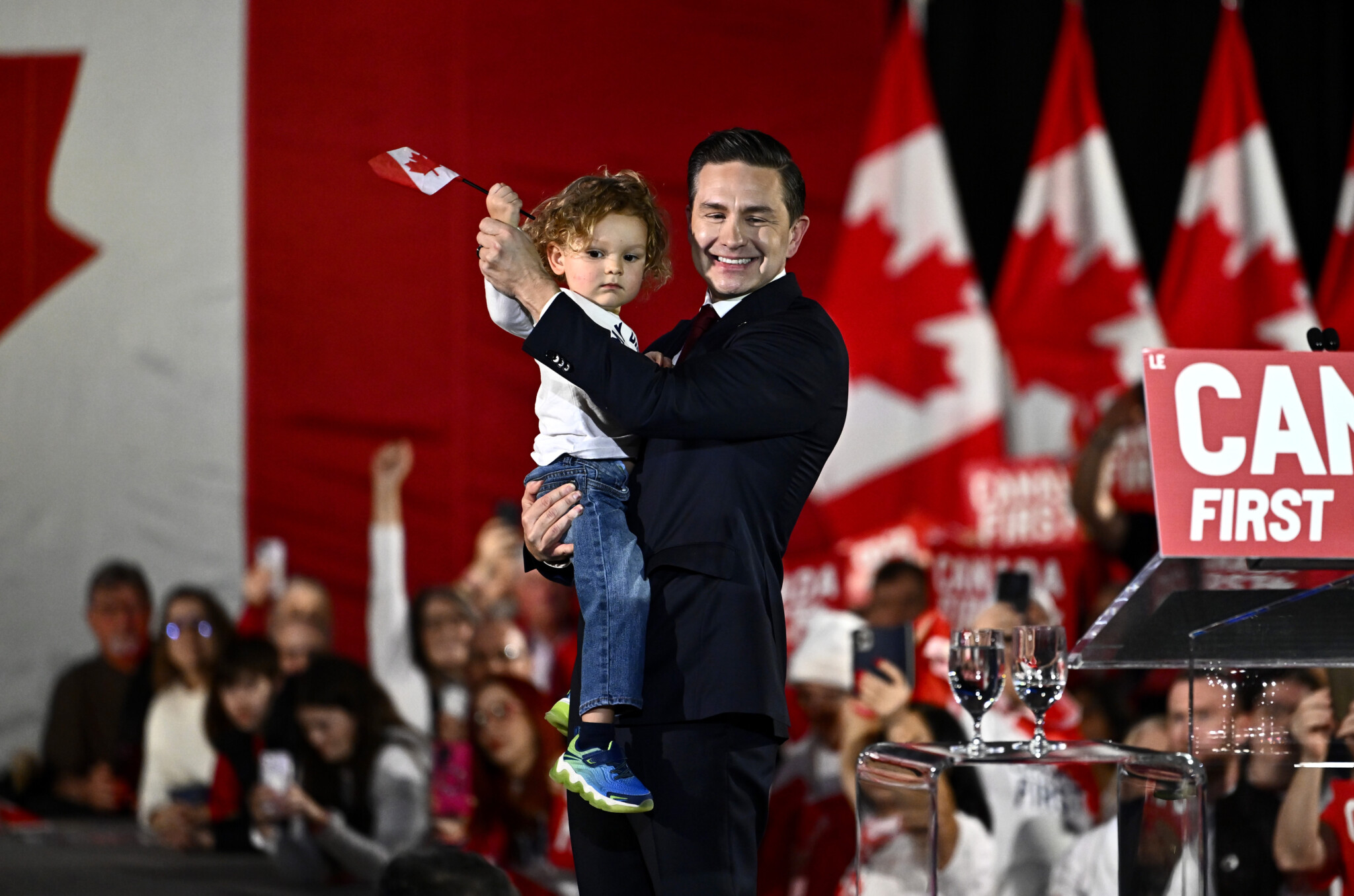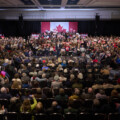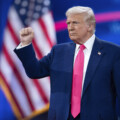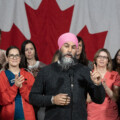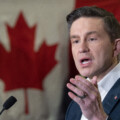Welcome to Need to Know, The Hub’s roundup of experts and insiders providing insights into the federal election stories, policy announcements, and campaign developments Canadians need to be keeping an eye on.
Will intergenerational polarization define this campaign?
By Sean Speer, The Hub’s editor-at-large
As the campaign takes shape, one of the emerging storylines is about its intergenerational dynamics.
This is partly because they’re working in a counterintuitive direction. A long-standing axiom of Western politics is that younger voters are left-wing and older ones are conservative. That’s long been true in Canadian politics as well as those of the United Kingdom, the United States, and elsewhere.
Since becoming leader 18 months ago, Pierre Poilievre has drawn attention across the Anglosphere for the Conservative Party’s inroads with younger voters. His appeal to young Canadians frustrated by high housing prices, poor employment prospects, and even the intergenerational inequities of COVID-era policies has led to an unprecedented spike in Conservative support among those aged 18 to 34.
At the party’s peak of popular support last year, the Conservatives had dominant leads across the age distribution in a way that signaled the potential for a significant majority government.
Donald Trump’s re-election and his threats to Canada have reset the political landscape in general and across intergenerational lines in particular. Although younger Canadians have stayed with the Conservatives, the support of older voters—historically a reliable cohort for the party—has proven less durable.
The overall gap between the two parties is bouncing around a bit according to different polls. But the age gap is more marked and persistent. The campaign is now polarized between the young and the old.
The Conservatives are clearly interested to sustain their youth support and regain ground with older voters. Yesterday’s policy announcement targeting seniors should be seen in this light. It’s of course too early to say if it will help.
The Liberals’ 2024 budget similarly recognized the party’s own intergenerational challenges. The government’s adoption of an intergenerational lens to fiscal policy in name of rebalancing the age distribution of taxes and spending received support from those who study the issue.
Since the campaign has kicked, however, Mark Carney and the Liberals appear more focused on consolidating their supporting among older voters than appealing to younger ones. The videos with Mike Myers and the allusions to the Come from Away musical during his trip to Gander, Newfoundland, give off an older vibe. It doesn’t feel like a coincidence that Carney turned 60 less than a week before the campaign officially launched.
The whole thing raises interesting yet worrying questions about the risks of intergenerational polarization. There’s a lot of focus on educational or regional polarization these days. But what does it mean if our politics pits generations against one another, including within families and households?
If current polls hold up, we may soon find out.
The Liberals play catch up as the Conservatives crush them on social media spending
By Cole Hogan, a conservative strategist
From March 16 to March 22, Pierre Poilievre’s Conservatives spent $563,000 on Meta platforms. This is the largest weekly ad spend number I’ve recorded since I began reporting on weekly federal party ad spends last summer. This number represents a weekly ad spend increase of $370,000 from the previous week, March 9 to March 15, when Conservatives spent $191,000.
The Conservatives have spent over $100,000 a week on Meta platforms since the week of February 16 to 22. The most viewed Conservative advertisement is currently a poll-based ad asking online users if they support Poilievre for prime minister.
Mark Carney’s Liberals spent $250,000 on Meta platforms from March 16 to March 22. This number represents a weekly ad spend increase of $217,000 from the previous week, March 9 to March 15, when Liberals spent $33,000. The Liberals were slow to catch up to the Conservatives in terms of pre-election ad spending.
The Liberals’ new $250,000 weekly ad spend from March 16 to March 22 is the first time in 2025 that the Liberals have spent more than $100,000 in one week. This is in part due to the Liberal leadership race from January to early March. The most viewed Liberal advertisement is currently one introducing Carney.
Given that Carney is less well-known to Canadians than Poilievre, I can estimate that the new Liberal ad spend is an effort to introduce Carney more broadly than he was during the Liberal leadership race.
Jagmeet Singh’s NDP is a non-factor in the digital air war, only having spent $6,000 between March 16 and March 22. The NDP has spent $2,000 a week since January 2025. Digital advertising is pay-to-play in terms of results (with proper targeting), and the NDP is far behind. The NDP’s ad creative is generic in design and does not currently feature Singh.
The Liberals remain weak on defence
By Richard Shimooka, contributing writer at The Hub and a senior fellow at the Macdonald-Laurier Institute
On Tuesday, Mark Carney unveiled the rump of his party’s defence policy platform for the election, claiming it will see an “unprecedented acceleration of investment in our armed forces.” Yet it’s essentially a restatement of the existing defence policy outlined in the government’s defence plan, Our North Strong and Free, with some minor tweaks. As I noted in a column several months ago, there are limited avenues open to rapidly increase defence spending due to capacity constraints within the Department of National Defence.
The topline number is that defence spending will reach 2 percent of GDP by 2030, only two years earlier than what was promised last year by Prime Minister Trudeau. It indicates a very limited acceleration in defence spending. While no specific figures were proffered, this “accelerated” spending is likely accounted for by Carney’s subsequent promises for increased defence infrastructure spending and pay raises for CAF personnel, as well as improving their quality of life. There is only a single line devoted to improving the defence procurement, an essential ingredient for the military’s ability to deliver systems in a timely manner.
Moreover, Carney seems to walk back several of his more controversial policy ideas of the past few weeks during the media Q&A session, such as potentially cancelling the balance of the F-35 order for another option, instead stating that he would make sure that Lockheed Martin would provide more jobs to Canada. The one interesting line was his desire to “partner with our allies on procurement for the next generation of aircraft.” It may portend Canada’s participation in either the U.K.-led Global Combat Air Program or the Franco-German Future Combat Air System for a sixth-generation fighter. The delivery of either of these platforms is expected in the late 2030s.
The announcement is achievable but unambitious: it essentially reinforces the status quo.
Jagmeet Singh and the NDP’s Nosedive
By Royce Koop, professor of political science at the University of Manitoba
Speaking of existential threats, have you checked out support for the NDP lately?
338Canada, as of yesterday, projects that the party will receive about 10 percent of the popular vote. That translates into a grand total of six projected seats. In my own province of Manitoba—the home of J.S. Woodsworth, Stanley Knowles, and Bill Blaikie—local polling suggests the NDP faces “potential annihilation.”
It seems like a disaster in the making. But the truth is the NDP has been here before, under the leadership of Audrey McLaughlin and then Alexa McDonough in the 1990s and early 2000s.
In 1993, McLaughlin drove the party into the ditch, scoring 7 percent of the popular vote and just nine seats. McDonough managed to revive the party’s fortunes to a small extent. But, in her last election as leader, she could only manage 9 percent of the vote and 13 seats. It was only under the leadership of Jack Layton that the party appeared able to rebuild, leading to the stunning 2011 election in which the party elected 103 MPs, displacing the Liberals as the official opposition.
In this election, Jagmeet Singh appears poised to lead his party to its absolute low-water mark, relegated to a handful of rock-solid NDP seats with popular incumbent MPs. The party faces years of rebuilding efforts.
I’m not, as it turns out, a New Democrat. But, if I was, I’d be pissed. Because over the past year, it was Singh who consistently refused to defeat Justin Trudeau’s Liberal government when he had the chance. This refusal allowed the Liberals to sort out their leadership woes and, as we now see, provided Mark Carney with the opportunity to eat the NDP’s lunch.
Sure, it would have been a gamble if Singh had dragged his party into an election sometime in 2024. But it now seems beyond foolish that Singh didn’t take the opportunity to force an election where he would square off against the deeply unpopular Trudeau. Whereas the NDP was previously nipping at the Liberals in the polls, under Carney, Liberal support has skyrocketed and NDP support, conversely, has nosedived.
Yes, campaigns matter and, as I’ve argued elsewhere, the deeply inexperienced Carney may blow his lead. But it’s hard to imagine a counterfactual scenario in which the NDP doesn’t do better than it is in the current campaign. The party’s current predicament can be laid squarely at Singh’s feet.
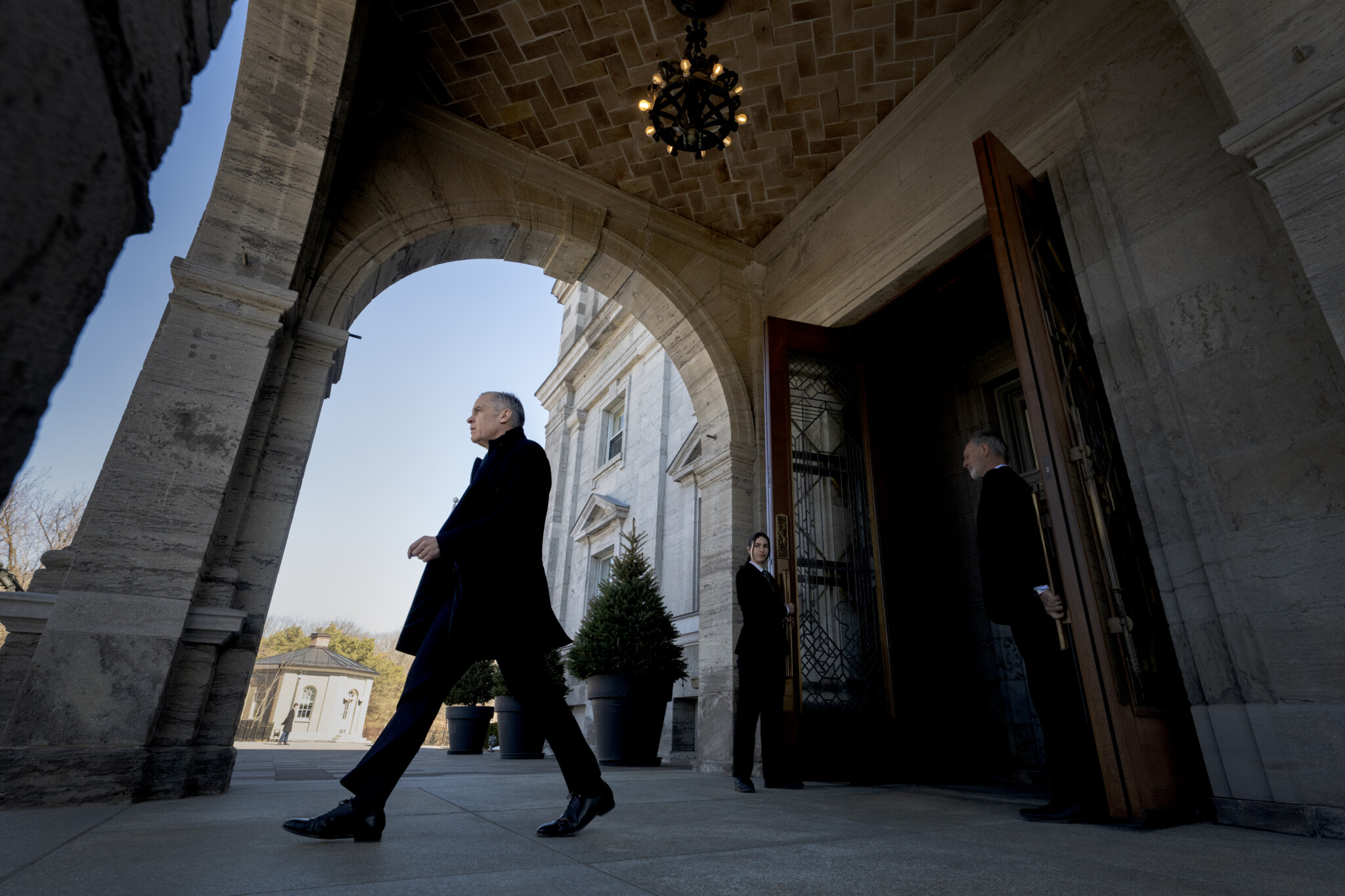
Prime Minister Mark Carney departs Rideau Hall in Ottawa, Sunday, March 23, 2025. Frank Gunn/The Canadian Press.
Canadians are being given a real choice this election
By Scott Reid, a principal and co-founder of Feschuk.Reid
To date, the general election of 2025 has offered Canadians a remarkable, almost startling, study in contrasts.
Mark Carney and Pierre Poilievre are so thoroughly unalike that it’s difficult to believe they are spun from the same animate material, much less seeking the same job.
One is a newcomer to politics with the instincts of a precise technician. The other has only ever worked in politics and is drawn to partisan displays of blunt force.
One speaks in a matter-of-fact, unadorned cadence that ignores the rhythms of modern media and politiciking. The other channels the clipped tones of a practiced orator, rousing and raising the large crowds he pitches.
One writes books about the intersection of values, public interest and modern finance. The other recommends books by Jordan Peterson.
Rarely have Canadians been presented with such a stark choice between leaders. But the differences are not limited merely to matters of style. In their two campaigns, we also see a collision of strategy.
Carney’s Liberals are zeroed in on Trump and tariffs, asking voters for a mandate to secure Canada’s economic and territorial sovereignty.
Poilievre’s Conservatives are pitching a more classic “throw the bums out” message of change, asking voters to deny the Liberals a fourth consecutive term.
“Take on Trump” versus “Time for a Change”—that is the week one battle these two campaigns have been waging over the ballot question.
With Donald Trump and reciprocal tariffs looming in week two, it’s awfully hard to see how the Conservatives can hope to win that battle.
